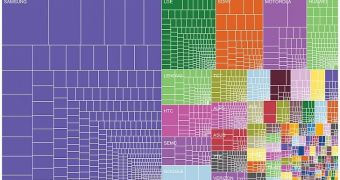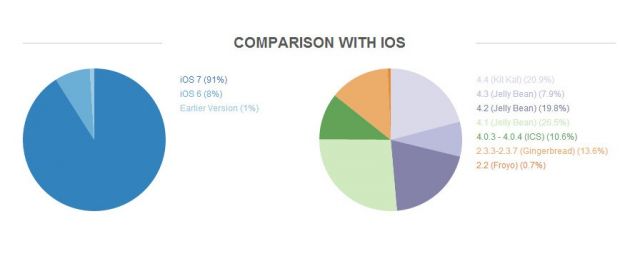Many would think that fragmentation is Android’s main weakness, but there are some advantages to this and Google knows it very well.
From the point of view of a developer who creates apps for Android, this fragmentation could be both a blessing and a curse. First of all, he needs to make sure his application is working on as many versions of Android as possible and on a wide range of hardware, which translates into a lot more work that’s not always rewarded financially.
On the other hand, developing an application that would work on the most affordable Android smartphones available on the market means a much higher audience for that particular app.
Another reason for which fragmentation really helped Android become the world’s dominant mobile platform is the fact that hundreds of handset manufacturers were able to flood the market with very cheap smartphones that rarely run the latest version of the operating system.
Basically, a huge amount of affordable Android smartphones running older versions of the mobile platform ended in the hands of users. There will always be more people who can’t afford mid- to high-end smartphones and will prefer to get a cheaper one with older software.
Now, that’s also been highlighted in OpenSignal’s smartphone statistics, where we can see who’s owning the Android smartphone market and which devices are now mostly used by customers.
Well, it looks like the number one spot is, once again, Samsung with no less than 43% share of the Android market and 12 of 13 most popular smartphones.
Samsung is followed far behind by Sony, with 4.8% share of the Android market, and although Samsung’s achievement may seem impressive at first glance, the company’s market share actually dropped from last year’s 47.5%.
Another way of looking at Android fragmentation from a developer’s point of view is by knowing which devices are popular on the market at a certain time. Given the fact that devs have a limited number of devices at their disposal in order to test their apps, it would be beneficial to see which smartphones are popular among Android users so they have a wider audience at launch.
As it happens, the first 10 most popular Android smartphones account for around 15% of the market share, which is something that any developer would strive for.
Last year, the same first 10 most popular devices accounted for no less than 21% of the market share, which means fragmentation increased this year by 60%.
Speaking of which, it appears that Samsung Galaxy S III with all of its variations is now the most popular Android smartphone out there, according to OpenSignal’s statistics.

 14 DAY TRIAL //
14 DAY TRIAL // 

